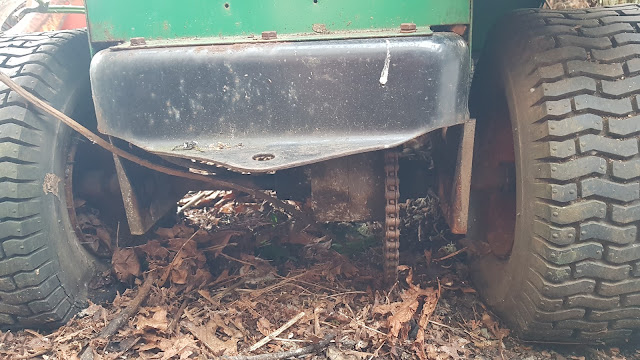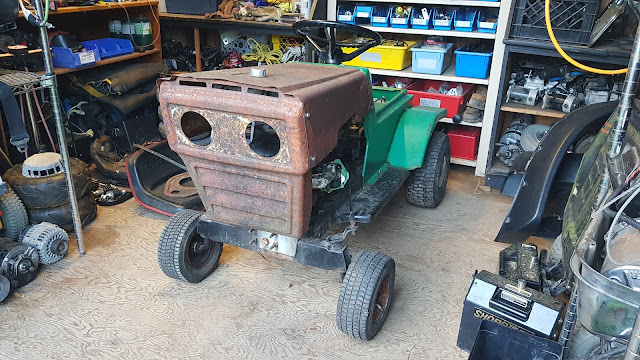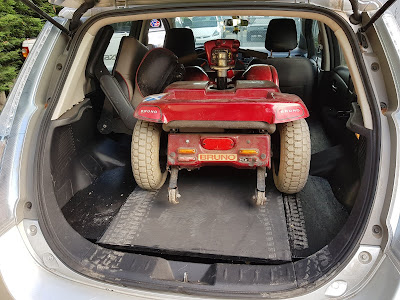It came time to dive into the thick of modifying this mower. The stock front axle on the mower was not set up for speed. It is tall and would likely get very shaky at higher speeds. The wheels are also loose on the spindles.
I dug through a pile of steering components from various mobility scooters I had parted out, and managed to find a perfectly suited pair of spindles. I cut them off the rest of the scooter steering arms they were attached to, and removed the front axle from the lawnmower.
I took the mower axle inside and got to work on removing the original spindles.
After some hammering, pressing, and grinding: I had the old spindles out.
I welded the new spindles right onto the ends of the axle. This widened it out a bit, and dropped it about 4". We set the spindles to have 6 degrees of camber and 6 degrees of caster.
I used the tie rod from the same scooter I took the spindles from, and extended it using a section of the stock mower tie rod. After the new spindles and tie rod were in place, I put it back on the mower with some wheels - to see how things were looking. We used the stock wheels and tires from the same scooter I took the other steering components from.
The big issue to solve in the steering was how to get the stock steering shaft assembly to properly drive our new spindles. In stock form: the steering shaft has a gear at the end that drives a small gear rack that pivots on a single point. There is a small arm extending from one end of the rack, and a rod runs from that arm to an arm on the stock spindle, to push it forwards or pull it back.
The issue was firstly that on the mower, the arm extending from the stock spindle was pointed outward over top of the tire, and our new spindle had and arm extending inward (in behind the wheel where it belongs). This meant if we hooked up our steering this way, it would steer backwards. Secondly, it wasn't exactly pointing inwards. It was sort of sideways, and was meant to be pushed from side to side - not forwards and backwards. Oh, and thirdly, the new spindle with the arm for the steering rod to connect to was on the wrong side.
The first thing was to reverse the spindles. I left the axle in the mower the same way to keep our proper caster (actually at first I just turned the whole axle assembly around, before realizing my mistake) and swapped the spindles around. This meant my tie rod had to move to the back, instead of the front. That worked out ok. To connect the rod coming from our steering rack, we were going to need some kind of pivot with arms at opposite ends - to reverse the direction of travel in the rod. In fact, to direct it in a sideways motion we needed the two arms at more of a 90 degree angle. Another scooter spindle would work great for that. I found the perfect spindle that was low profile, and bolted on top of the axle nicely. On the arm that normally would have had a tie rod going to it, I used a short tie rod to connect it to the arm on the scooter spindle. On the spindle itself, I welded on a piece of flat bar and drilled a hole to mount the mowers steering rod.
I now have a rolling chassis that has been lowered in the front a total of 3.5", adding the 4" spindle drop, and slightly larger tires. The steering is also much tighter than the original lawnmower steering, and is set up for taking corners much better. Next week I am going to put on a new belt, set up new throttle and choke cables, and see if we can get this thing moving under its own power.






















































